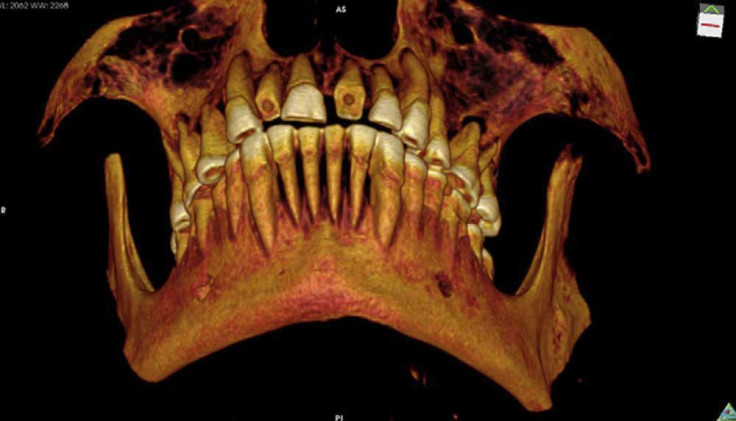Ancient Egyptian Mummy Reveals Man Who Died From Mouthful of Cavities

If you have a toothache and are dreading a visit to the dentist, perhaps looking at an Ancient Egyptian mummy will provoke a change of heart. The mummy reveals that, about 2,100 years ago, a young man living in Thebes died, likely because of a sinus infection. That infection was brought on by a mouthful of cavities and other dental ailments, says a new study published in the International Journal of Paleopathology detailing the man's interesting dental treatment.
Using CT scans, researchers were able to reconstruct his final days. The man was reportedly in their 20s or 30s and he had numerous abscesses and cavities. As a result of his dental situation, he would have been in immense pain that would have caused him to suffer beyond words.
As a result, he would have seen a dental specialist. Dentistry was nothing new in the ancient world or in ancient Egypt; earlier this year, a tooth filled with beeswax provided the earliest documented example of dentistry. Dentistry particularly filled a great need in Egypt, where coarsely ground grain provided wear and tear on teeth and caused numerous dental problems.
But the young unnamed man's problems would have been overwhelming for a modern dentist with contemporary technology and techniques. Even today, dental infections can pose a serious health risk.
So the ancient dental specialist still tried something to relieve his patient's suffering. He dipped a piece of linen in medicine, like fig juice or cedar oil, and created a form of "packing". The treatment would help ease the pain and provide a barrier that would prevent food particles from hitting his worst cavity. At best, it allowed the man some relief, but just a few weeks later he would pass away, probably from a related sinus infection.
All of this information was obtained with an extremely high-resolution CT scan on the young man's mummified body. Led by Andrew Wade, then at the University of Western Ontario, the researchers found that this was the earliest known example of "packing". Today, more modern techniques would aim to stabilize the tooth, rather than to simply buffer it.
The study shows how far technology has come, and how some things - like dental problems - never change.
Published by Medicaldaily.com



























